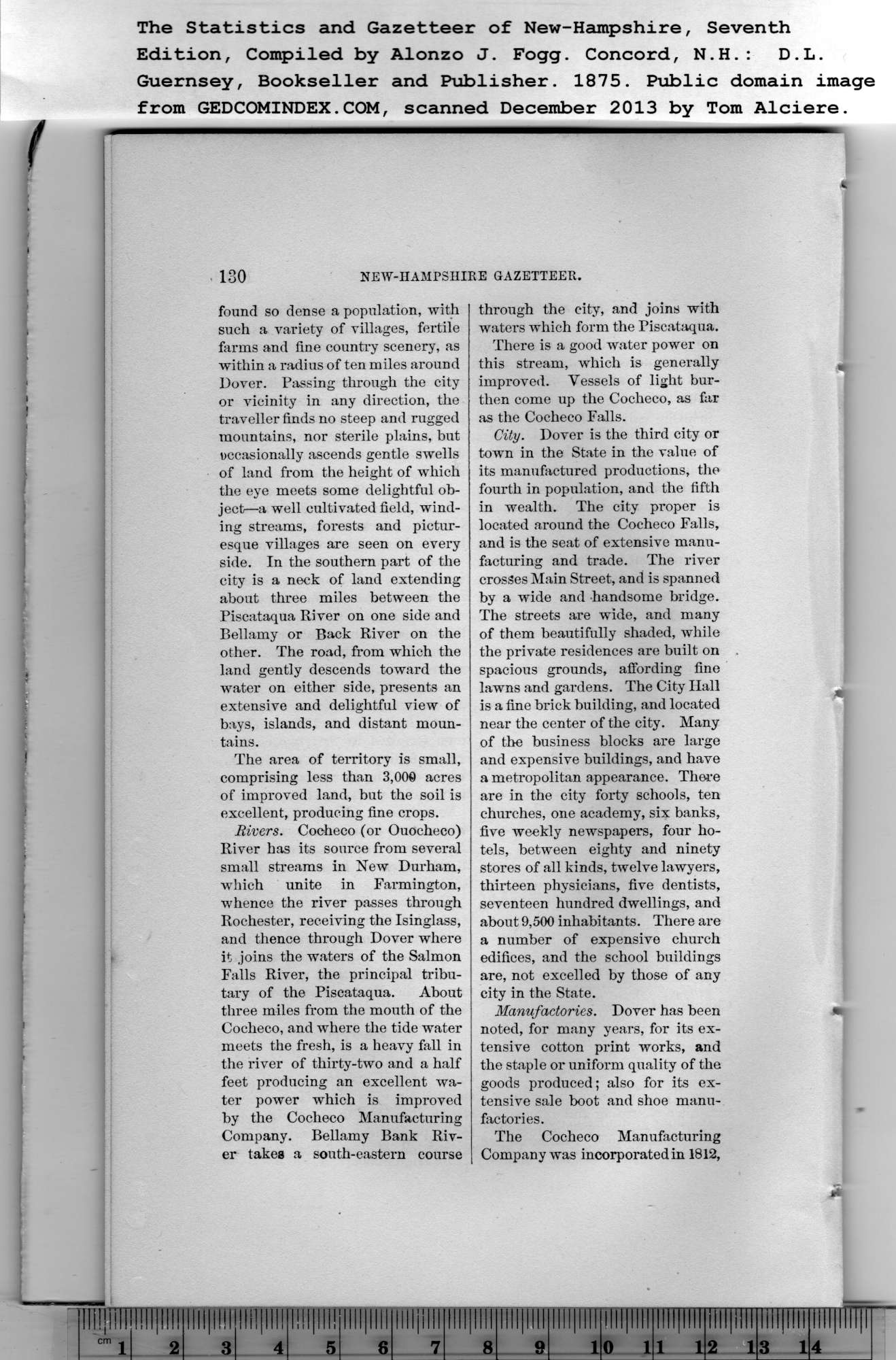|
found so dense a population, with
such a variety of villages, fertile
farms and fine country scenery, as
within a radius of ten miles around
Dover. Passing through the city
or vicinity in any direction, the
traveller finds no steep and rugged
mountains, nor sterile plains, but
occasionally ascends gentle swells
of land from the height of which
the eye meets some delightful ob-
ject—a well cultivated field, wind-
ing streams, forests and pictur-
esque villages are seen on every
side. In the southern part of the
city is a neck of land extending
about three miles between the
Piscataqua River on one side and
Bellamy or Back River on the
other. The road, from which the
land gently descends toward the
water on either side, presents an
extensive and delightful view of
bays, islands, and distant moun-
tains.
The area of territory is small,
comprising less than 3,000 acres
of improved land, but the soil is
excellent, producing fine crops.
Rivers. Cocheco (or Ouocheco)
River has its source from several
small streams in New Durham,
which unite in Farmington,
whence the river passes through
Rochester, receiving the Isinglass,
and thence through Dover where
it joins the waters of the Salmon
Falls River, the principal tribu-
tary of the Piscataqua. About
three miles from the mouth of the
Cocheco, and where the tide water
meets the fresh, is a heavy fall in
the river of thirty-two and a half
feet producing an excellent wa-
ter power which is improved
by the Cocheco Manufacturing
Company. Bellamy Bank Riv-
er takes a south-eastern course |
through the city, and joins with
waters which form the Piscataqua.
There is a good water power on
this stream, which is generally
improved. Vessels of light bur-
then come up the Cocheco, as far
as the Cocheco Falls.
City. Dover is the third city or
town in the State in the value of
its manufactured productions, the
fourth in population, and the fifth
in wealth. The city proper is
located around the Cocheco Falls,
and is the seat of extensive manu-
facturing and trade. The river
crosses Main Street, and is spanned
by a wide and handsome bridge.
The streets are wide, and many
of them beautifully shaded, while
the private residences are built on
spacious grounds, affording fine
lawns and gardens. The City Hall
is a fine brick building, and located
near the center of the city. Many
of the business blocks are large
and expensive buildings, and have
a metropolitan appearance. There
are in the city forty schools, ten
churches, one academy, six banks,
five weekly newspapers, four ho-
tels, between eighty and ninety
stores of all kinds, twelve lawyers,
thirteen physicians, five dentists,
seventeen hundred dwellings, and
about 9,500 inhabitants. There are
a number of expensive church
edifices, and the school buildings
are, not excelled by those of any
city in the State.
Manufactories. Dover has been
noted, for many years, for its ex-
tensive cotton print works, and
the staple or uniform quality of the
goods produced; also for its ex-
tensive sale boot and shoe manu-
factories.
The Cocheco Manufacturing
Company was incorporated in 1812, |
